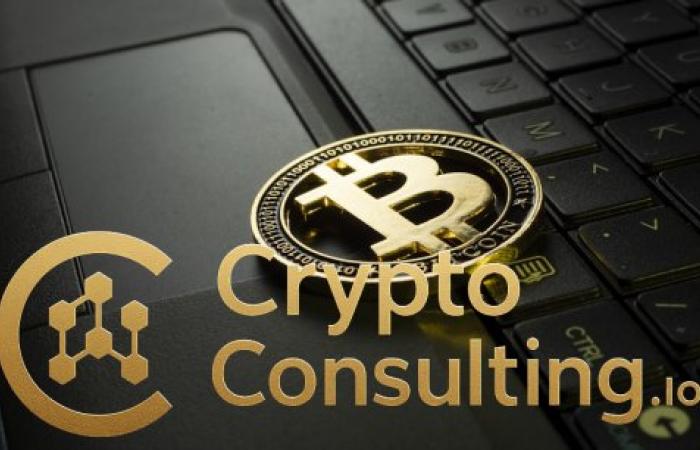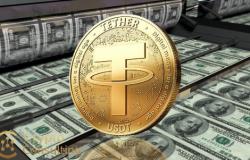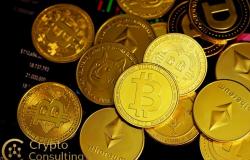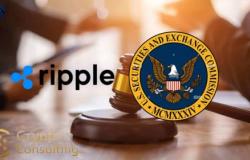
Solana has achieved a remarkable milestone in Q4 2025, recording 12 million daily active users and establishing itself as one of the most active blockchain networks globally. This user growth, combined with record transaction volumes, thriving DeFi ecosystem, successful NFT marketplace activity, and expanding developer community, demonstrates that Solana has recovered from previous challenges and positioned itself as a major competitor to Ethereum in the smart contract platform space. The network's high-performance architecture, low transaction costs, and improving reliability have attracted diverse applications ranging from decentralized finance to gaming to payments, creating a comprehensive ecosystem that rivals established blockchain platforms.
The 12 million daily active user figure represents exponential growth from approximately 2 million daily users in 2023, indicating that Solana has achieved genuine adoption beyond speculation. These users engage with diverse applications including DeFi protocols, NFT marketplaces, gaming platforms, social media applications, and payment systems. The user base spans global markets with particular strength in regions where high-throughput, low-cost transactions are essential for practical adoption. This geographic and use-case diversity provides resilience against concentration risks and demonstrates Solana's versatility as a blockchain platform.
High-Performance Architecture and Scalability

Solana's technical architecture enables the high throughput that has attracted millions of users. The network's Proof of History consensus mechanism creates a verifiable passage of time between events, enabling validators to efficiently process transactions without extensive communication. This innovation, combined with optimistic concurrency control and efficient state management, enables Solana to theoretically process 65,000 transactions per second. While sustained real-world throughput typically ranges between 3,000-7,000 TPS, this remains substantially higher than most competing blockchains.
Transaction costs on Solana average $0.00025, making the network practical for microtransactions, frequent trading, and use cases where Ethereum gas fees would be prohibitive. This cost advantage has been crucial for attracting applications including gaming, social media, and payments where users expect near-zero transaction fees. The low costs enable business models impossible on higher-fee blockchains while making blockchain technology accessible to users in developing markets where even small fees represent barriers.
Network reliability has improved substantially following instability that plagued Solana in 2021-2022. The network experienced multiple outages caused by congestion, validator crashes, and various technical issues that raised concerns about Solana's production readiness. However, extensive engineering improvements including better congestion management, stake-weighted quality of service, and validator performance enhancements have dramatically improved uptime. Solana has maintained consistent operations throughout 2024-2025 without major outages, restoring confidence in network reliability.
DeFi Ecosystem Growth and Total Value Locked
Solana's DeFi ecosystem has grown to manage over $8 billion in total value locked across lending protocols, decentralized exchanges, liquid staking services, and derivatives platforms. This represents substantial recovery from lows below $1 billion following the FTX collapse, which affected Solana disproportionately due to FTX's heavy backing of the ecosystem. The recovery demonstrates that Solana's fundamentals extend beyond any single backer and that developers and users have embraced the platform based on technical merits.
Jupiter, Solana's leading decentralized exchange aggregator, processes over $1.5 billion in daily trading volume, rivaling volumes on major centralized exchanges. The platform aggregates liquidity across multiple Solana DEXs including Raydium, Orca, and Phoenix, providing users with optimal execution through intelligent routing. Jupiter's success demonstrates that decentralized exchange infrastructure on Solana can provide user experiences comparable to centralized platforms while maintaining the benefits of self-custody and transparency.
Marinade Finance and Jito dominate liquid staking on Solana, collectively managing over $3 billion in staked SOL. These platforms enable users to earn staking rewards while maintaining liquidity through tradable staking derivative tokens. Liquid staking has become essential DeFi infrastructure, enabling capital efficiency by allowing users to simultaneously earn staking yields and deploy capital in other DeFi protocols. The growth of liquid staking on Solana mirrors trends on Ethereum and other proof-of-stake networks.
Lending protocols including Solend and MarginFi provide borrowing and lending functionality with over $1.2 billion in deposits. Users deposit assets to earn interest while borrowers use these funds with collateral posted. The lending markets create leverage opportunities for traders, enable liquidity management for market makers, and provide yield for passive depositors. Solana's fast finality and low costs make these lending protocols practical for smaller position sizes economically impractical on higher-fee chains.
NFT Marketplace Activity and Digital Collectibles
Solana has established itself as the second-largest NFT ecosystem after Ethereum, with monthly trading volumes exceeding $400 million in Q4 2025. Magic Eden, Tensor, and other Solana-native marketplaces process millions of NFT transactions monthly with transaction fees orders of magnitude lower than Ethereum-based alternatives. This cost advantage has made Solana particularly attractive for gaming NFTs, generative art projects, and other applications involving frequent transactions.
Major NFT collections on Solana including DeGods, Mad Lads, and Okay Bears have maintained floor prices and trading activity despite broader NFT market challenges. Several of these collections have achieved floor prices exceeding 100 SOL (over $10,000), demonstrating that Solana NFTs can capture substantial value. The migration of some prominent collections including DeGods to Ethereum and subsequent returns to Solana highlighted debates about network effect versus performance, with many projects concluding that Solana's user experience advantages outweigh Ethereum's larger liquidity.
Compressed NFTs technology enables massive-scale NFT minting at minimal cost. By storing NFT state in Solana's state compression trees rather than traditional account models, projects can mint millions of NFTs for costs below $100. This technology has enabled new use cases including loyalty programs, tickets, credentials, and gaming assets where traditional NFT costs would be prohibitive. Several major projects have leveraged compressed NFTs to distribute millions of digital assets to communities.
Gaming and Consumer Applications
Blockchain gaming has flourished on Solana due to the performance requirements that make most games impractical on slower, more expensive networks. Star Atlas, Aurory, and numerous other games have chosen Solana for its ability to process the high transaction volumes that gaming requires. The sub-second finality enables real-time gaming experiences comparable to traditional games, while low fees make frequent in-game transactions economical.
Decentralized social media applications represent an emerging category thriving on Solana. These platforms leverage blockchain for content ownership, creator monetization, and resistance to censorship while requiring blockchain performance that can match web2 user experiences. Solana's speed and cost structure enable social media applications to feel responsive despite blockchain backends, a critical requirement for mainstream user adoption.
Mobile integration has been a strategic focus for Solana, with the Saga phone representing an ambitious attempt to integrate blockchain capabilities into consumer hardware. While initial sales were modest, demand increased substantially as users recognized the value proposition, leading to rapid sellout of remaining inventory and announcement of a second-generation device. The mobile-first approach recognizes that future blockchain adoption will predominantly occur on mobile devices, particularly in developing markets.
Institutional Adoption and Enterprise Integration
Institutional interest in Solana has recovered and grown following the ecosystem's dissociation from FTX. Major financial institutions including Visa have announced Solana integration for settlement and payment applications. Visa's choice of Solana for USDC settlement infrastructure validates the network's enterprise readiness and demonstrates that traditional finance institutions recognize Solana's performance advantages for payment processing.
Shopify integration enables millions of merchants to accept Solana-based payments including SOL, USDC, and other SPL tokens. This mainstream commerce integration provides practical utility for Solana tokens beyond speculation and crypto-native applications. The low transaction fees make Solana viable for everyday purchases where Ethereum gas costs would exceed many transaction values.
Real-world asset tokenization projects are increasingly choosing Solana for securities, real estate, and commodities tokenization. The combination of fast settlement, low costs, and improving regulatory clarity makes Solana attractive for institutional asset issuance. Several tokenized securities have launched on Solana, demonstrating that the network can serve traditional finance use cases while maintaining the performance characteristics that attract crypto-native applications.
Developer Ecosystem and Tooling
Solana's developer ecosystem has grown substantially with thousands of developers building applications across diverse categories. Developer tooling has matured with improved SDKs, deployment frameworks, and testing environments that lower barriers to building on Solana. The Anchor framework provides opinionated infrastructure for smart contract development, functioning analogously to Ruby on Rails for Solana development.
Grant programs and accelerators funded by the Solana Foundation and ecosystem ventures have deployed hundreds of millions supporting promising projects. This financial support has been crucial for attracting developers and funding projects through early stages before they achieve product-market fit and sustainable business models. The grant infrastructure mirrors successful ecosystems like Ethereum and Polygon that have used financial incentives to seed developer activity.
Hackathons and developer conferences create community and showcase innovation within the Solana ecosystem. Regular events attract thousands of participants building proof-of-concepts, many of which evolve into funded projects and production applications. This community-building has been essential for maintaining developer enthusiasm and ensuring continuous innovation.
Future Developments and Roadmap
Firedancer, a second validator client being developed by Jump Crypto, represents a major infrastructure improvement expected to substantially increase network throughput and resilience. The independent implementation will provide client diversity similar to Ethereum's multiple clients, improving network security by eliminating single points of failure. Firedancer is optimized for extreme performance and expected to enable throughput exceeding current capabilities.
State compression and various scaling solutions continue improving Solana's efficiency. These enhancements enable more data storage in constrained blockspace while maintaining security and verifiability. The improvements are particularly relevant for NFTs, gaming state, and other applications requiring extensive data storage.
Cross-chain bridge improvements and integration with other ecosystems will enhance Solana's connectivity with the broader blockchain landscape. While Solana offers superior performance for many use cases, interoperability with Ethereum, Polygon, and other networks remains important for accessing liquidity and users across chains. Improved bridge security and user experience will facilitate asset flows that benefit all connected ecosystems.
Conclusion
Solana's achievement of 12 million daily active users and record transaction volumes demonstrates that the network has established itself as a legitimate smart contract platform competing with Ethereum and other established blockchains. The combination of high performance, low costs, improving reliability, thriving ecosystem, and expanding developer community positions Solana for continued growth as blockchain technology achieves mainstream adoption. While challenges remain including continued improvement of decentralization and finalizing key infrastructure upgrades, Solana's trajectory suggests it will remain a major blockchain platform throughout the current decade and beyond.





